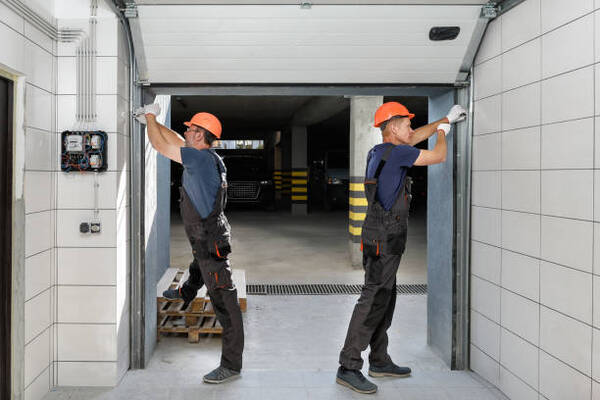- 1-905-452-8193
- Contact Us
- Member Login
- Get Listed Today
- 220,911 members

An automatic garage door is a motorized device that opens and closes, and is often set up by experts in garage doors Sydney. Most modern garage door openers are operated by remote control. There are also garage door openers that are operated by keypads, fingerprint readers, or other security devices.
Automatic garage door openers usually include a transmission, trolley, rail, and one or more motors. The transmission is connected to the trolley, which moves along the rail on the ceiling of the garage. The trolley is connected to the garage door itself, and the motor(s) move the trolley along the rail to open or close the door.
There are two main types of automatic garage door opener transmissions: chain drive and belt drive. Chain drive openers are the most common type, and they use a metal chain to move the trolley along the rail. Belt drive openers are less common, but they are quieter than chain drive openers and may be a good choice if your garage is attached to your home.
When you press the remote control to open your garage door, the opener's motor turns on and starts moving the trolley along the rail. The opener will stop the trolley when it reaches the fully open position, and then it will reverse direction and start moving the trolley back to the closed position. When the trolley reaches the fully closed position, the opener's motor will turn off.
You can also use the opener to open your garage door manually. Most openers have a release handle that you can use to disengage the trolley from the rail. Once the trolley is disengaged, you can move it along the rail to the open or closed position. When you're finished, you can engage the trolley by pulling on the release handle again.
An automatic garage door opener is a great convenience, especially when it comes to bad weather or if you have your hands full. However, it's important to make sure that your opener is installed properly to avoid any accidents or damage.
Here are some important tips for effectively installing an automatic garage door.
1. Read the instructions carefully before starting the installation process. This will help you avoid any mistakes and will make the process go more smoothly.
2. Make sure that the power is turned off before beginning any work on the opener.
3. It's generally a good idea to have someone help you with the installation, as it can be difficult to do it by yourself.
4. Most openers come with a template that you can use to mark the location of the holes that need to be drilled. Make sure that you follow the template closely so that the opener will be installed in the correct spot.
5. When drilling the holes, be careful not to damage any other parts of the garage door or opener.
6. Once the holes are drilled, it's time to install the brackets that will hold the opener in place. Again, make sure that you follow the instructions carefully so that everything is installed correctly and securely.
7. The next step is to connect the opener to the power source. Be sure to do this properly so that there is no risk of electrocution.
8. Finally, test the opener to make sure that it is working correctly. Open and close the door a few times to make sure that everything is functioning properly.
9. If you have any questions or concerns about the installation process, be sure to consult with a professional. They will be able to help you ensure that your opener is installed correctly and safely.
If your garage door opener stops working, there are a few things you can do to troubleshoot the problem. First, check to make sure that the opener is plugged into an outlet and that the outlet is working. Next, check the batteries in the remote control. If they're dead, replace them with fresh batteries. Finally, if your opener has a keypad, make sure that it's programmed with the correct code. If none of these steps solves the problem, you may need to call a garage door repair service.
